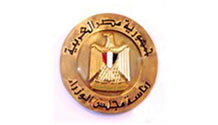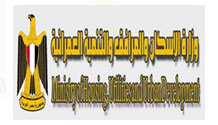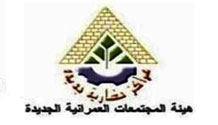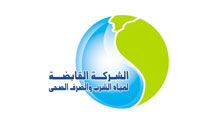An efficient and resilient transport system is essential to support a dynamic business sector and a flexible workforce in the country with the largest population in the region, and with one of the highest population densities in the world in the Nile Valley. It is also critical to supporting Egypt’s export industry, with around 90% of the country’s foreign trade shipped through ports.
With a growing population and enterprises shifting their focus to export markets, the Government is committed to building a modern transport network capable of underpinning the country’s economic vision.
Around US$ 8 billion has already been invested in the construction of two new lines for the Cairo metro system. A program to upgrade a fleet of around 2000 diesel buses is underway. The Government has already committed an additional EGP 1.4 billion to Egypt’s public transportation system, including the procurement of 1200 public buses. Furthermore, the Government is providing incentives to encourage greater private sector investment in the country’s transportation network.
A recovering economy will create further demand for investment in the country’s transportation network. Growth is expected across all sub-sectors in transportation, including rail, roads and import and export infrastructure.
As the Arab world’s most populous country, and one of its largest economies, Egypt has always had to work overtime to ensure that infrastructure capacity keeps up with demand.
While the past few years of political and economic uncertainty have slowed capital spending on infrastructure, 2015 has seen that trend reversed in dramatic fashion, with the President Abdel Fattah El Sisi aggressively prioritizing the completion of major infrastructure projects as part of his policy agenda. The most visible evidence of this is the expansion of the Suez Canal, a project that was completed in record time and was almost entirely financed by the local market.
However, a number of other projects are in the pipeline, targeting everything from roads to rail to logistics zones, which should help Egypt address some of its more prominent transport bottlenecks which have driven up the cost of trading and distribution, and reduced mobility.
The country is doing more than just fixing problems. It is working to overhaul its transportation platform and establish itself as major transit corridor for both air and sea transportation. “Egypt is already the door to Africa, with ships from the Mediterranean choosing the Suez Canal to reach Eastern Africa and the Gulf countries,” Mohamed Mouselhy, chairman of Finmar Shipping, told.
New industrial and logistics zones are being built near the canal. These will encourage more of the goods and commodities passing through to be processed, packaged, trans-shipped or consumed within Egypt, meaning that more value added will be left in the country. “Egypt has the potential to become a significant shipping and logistics hub similar to Singapore,” Marwan El Sammak, CEO of Ship & C.R.E.W., told.
Connecting different parts of the world has been a good earner of hard currency for Egypt, but participating more in global value and supply chains will allow it to get more out of the asset, so the associated logistics, housing and industrial projects are essential to the success of the canal.
The boldness of the administration’s agenda, in conjunction with the Ministry of Finance, has attracted increasing interest from investors, especially those from China, Europe and the MENA region, who have expressed an interest in supporting the enormous transportation programme that is being undertaken. Foreign investment will complement the work already being done to improve Egypt’s growing infrastructure .
The government is also planning major expansion of Egypt’s ports. It is hoping to triple capacity from 120m tonnes to 370m tonnes by 2030, with the Red Sea Port Authority building new facilities, including dry bulk and container, at the nine ports it manages.Port Said, the busiest port in Egypt and the 43rd-busiest in the world, is one area of significant activity. The Port Said Master Plan includes a comprehensive transformation, complete with industrial zones, administrative zones, a tourism zone and an agricultural zone.
The East Port Said initiative is one of the country’s largest planned capital expenditures. The port will be developed in stages between 2015 and 2030. In each stage, the size of the terminals will be increased, more liquid terminals will be added and shipyards will be introduced.A new residential area will be built that will accommodate an estimated 1.5m people, and space will be included for businesses, academic institutions and tourism sites. The industrial zone will be the largest in Egypt, with an expected investment of LE120bn ($16.4bn) in a wide range of industries, from light to heavy, and space for research and logistics. Alexandria Port is also being redeveloped, at a cost of LE120bn ($16.4bn). The plan is expected to make the port the largest in the region. An industrial area and a logistics area will be included in the final development.
The most vital mode of transport in Egypt is road, which accounts for an estimated 94% of all cargo transport throughout the country.. As a result, the government has placed an especially high priority on completing improvements to – and an expansion of – the network. This work is also expected to help the country to leverage growth in associated areas, such as export-oriented manufacturing and tourism.
In the near term, the government has targeted 15 new roads and a total 1200 km to be completed by the end of fiscal year 2014/15, at an expected cost of LE17bn ($2.3bn). The National Road Project calls for the construction of 3200 km of roads, at a total estimated cost of LE36bn ($4.9bn), while news reports in late 2015 indicated that the country would be adding 4000 km of roads in 2016.
Several key links are currently being built, such as the 180-km route from Safaga to El Quseir to Marsa Alam, costing $85m, the Ras Sudr to Sharm El Sheikh road ($71m) and the Alexandria to Abu Simbel road ($46m). Top priorities include the improvements being made on the 100-km Cairo-Ismailia Desert Road, which is being widened and developed with the addition of bridges for u-turns. The Cairo Ring Road is being connected with the Cairo-Ismailia Desert Road by the 5-km Lieutenant General Saad Eldeen Elshazly Road. In addition, in December 2014 the government signed an agreement with China National Aero-Technology Import and Export Corporation to help reconstruct and expand 24,000 km of Egypt’s roads.
To help alleviate pressure on the road network, and reduce both delays and costs for domestic supply chains, there is also a push to improve the country’s rail network. The total length in 2014 was 5195 km, according to the World Bank, and 5530 km according to Egypt’s General Authority for Investment and Free Zones. The system has a total of 705 stations and 800 locomotives. However, the rail system is old and in need of an upgrade. An estimated 85% of the signals in the system are mechanical.In March 2014 Egypt’s railways carried 2.7m passengers, down from 20.7m a year earlier. To help reverse this trend, the government is looking at a handful of projects to expand capacity and improve performance.
High-speed rail has recently been taken up again. The cost is estimated at $10bn. Trains on the line are expected to hit a maximum speed of 350 km per hour. In August 2015 news reports said that the Cabinet had approved the first high-speed line. Planned to be completed in two years, it will run from the centre of Cairo to the country’s planned administrative centre (a total of 67.8 km), feature 12 stations and feature 22 trains of six carriages each.
According to local press reports, the deal to establish the high-speed train was signed with the Chinese government and holding company Aviation Industry Corporation of China ahead of President Sisi’s visit to China in December 2014. The project will be financed by the Chinese firm through concessional conditions and repayment duration of up to 20 years.
Another train line also appears to be in the offing. After President Sisi visited China in December 2014, an agreement was signed with China Harbour Engineering Company for a line running from Alexandria to Aswan. It will cost $10bn and the total length of the track will be 900 km.
Egyptian National Railways is also planning to improve rail services by acquiring modern energy-efficient rolling stock with a €126 loan granted by the European Bank for Reconstruction and Development. The proposed project will enable the procurement of new locomotives and carriages, as well as incidental services (supply and maintenance) for train services between Cairo and Alexandria and potentially also between Cairo and Aswan.
The government is also investing large sums in urban transport as part of the attempt to reduce congestion. Line 3 of Cairo’s metro system is still being built, with Phase 3 taking the line in two directions, towards both Cairo University and Rod El Farag. Work on Phase 4, which will run to Cairo Airport, commenced in early 2015. In November 2014 LE9bn ($1.2bn) was allocated for the extension of Line 3 to the airport, with a three-year timeframe given for completion of the project. Another LE7bn ($954.1m) was allocated for the purchase of new trains for the line. Line 4 will run from the Haram District to the New Cairo District, and will be funded by the Japan International Cooperation Agency and the Egyptian government. Cairo will have six metro lines by 2020, with daily subway commuter traffic forecast to jump from the current 4m to 16m.
In addition, a consortium of Canada’s Bombardier and Egypt’s Orascom Construction and Arab Contractors is working to create Cairo’s first monorail, to be operational by 2018. It will run from 6th of October City to Sheikh Zayed, Giza and Cairo.
Why Visit Infra Africa & Middle East Show 2017 ?
- Over 200 companies are expected to showcase their latest products and services. meet suppliers and discussed their requirements with new and established business partners
- See new products
- Attend product demonstrations
- Hear about what’s on the agenda for the industry, and what this means for you
- Keep a close eye on your competitors
- Compare features and prices of products and services
Infra Africa & Middle East Show 2017 is more than an exhibition
- Live product demonstrations
- On-track displays
- Keynote addresses from industry leaders
- Free technical seminars, project updates and discussion forums
- Industry innovations
Why Exhibit?
- Infra Africa & Middle East Show 2017 attracts international visitors and exhibitors as well as industry leading keynote speakers – all of which provide the ideal platform for the industry to come together and do business.
- Close deals & increase sales & Beat the competition
- Place yourself ‘front of mind’ for prospects and existing customers – demonstrate that your company is strong
- Collect leads and make high quality connections – meet the right contacts to further your business, in one place at one time
- Studies have shown that face to face meetings at exhibitions are the second most effective means of generating sales leads after a company’s own website
- Increase your brand exposure and awareness & Launch new products and services
- Infra Africa & Middle East Show 2017brings people together from across the industry in one place. It provides networking opportunities for people that wouldn’t normally be together














